Basic Principles Of Light Underwater
The Underwater Photography Blues
Are your images feeling a little blue? Have you been wondering why the amazing colors from your dive never made it into your images? If you’re not using the appropriate strobes, or not using your strobes properly to light your subjects, your images will quite literally take on a bluish hue. Don’t fret. This is actually a very common problem and is easily remedied.
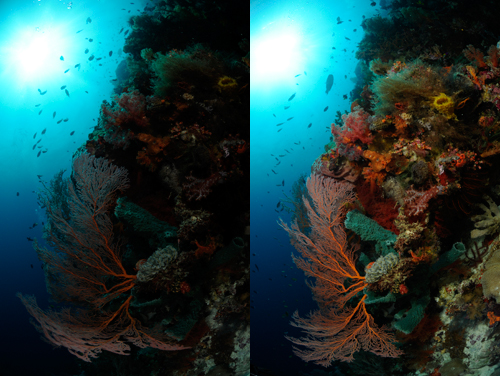
Water absorbs light very quickly due to the fact that water is exponentially denser than air – approximately 800 times denser to be fairly precise. Not only does this result in dull, monotone colors, but it also decreases contrast and image sharpness. New underwater photographers often get frustrated from the blue / gray hue of their images - a direct result of the properties of water and the affect of light absorption.
Specific frequencies of ambient light get absorbed at different depths, from the longest wavelength to shortest (basically the colors of the rainbow, remember ROYGBIV?). Red nearly disappears at around 5 meters, followed by orange at 10 meters, yellow at 20 meters, green at 30 meters and eventually even blue at 60 meters.
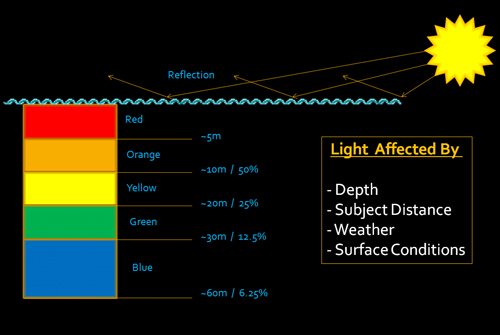
Refraction
Another property of water to be aware of, albeit not as important as the absorption issue, is refraction. Technically, refraction is the change in direction of a wave due to a change in its speed, which occurs when passing from one medium to another - such as between the ocean and the air in your mask or dome port.
Water has a refractive index of about 1.33, while air has a refractive index of about 1.0003. Practically, this difference in refractive index makes objects appear bigger and closer underwater, approximately 25% bigger. The example commonly used to demonstrate this property is placing a pencil halfway in a glass of water. The pencil will appear to bend at the water's surface due to the bending of light rays as they move from the water to the air. Simple, right?
Remember that practically, what you see in your viewfinder or LCD screen is what you get. Refraction is an issue that you need not worry yourself over, but we wouldn't be doing our jobs if we didn't mention it. There are ramifications for how the ports on your housing are designed, and where your lenses focus underwater. However, the manufacturers design ports to work within the parameters of refraction, and in certain situations, like when shooting a DSLR and a mid-range zoon lens, you may need to use a diopter in order to obtain the best focus underwater, but this is a totally different topic from lighting.
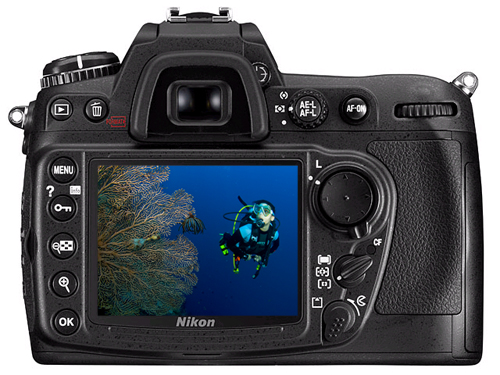
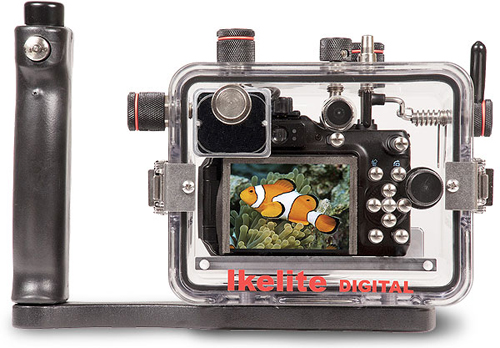
Underwater Strobes
Due to this color loss underwater, underwater photography requires a means of compensation to restore the colors and contrast lost from absorption. This is accomplished by using artificial light (underwater strobes), and in some scenarios can be accomplished with filters.
Strobes emit daylight-balanced light that help to paint the color back into your images, create contrast, accentuate textures and retain details. Sometimes strobes are used to fill in light where shadows dominate, while in other instances strobes provide the key lighting for your image. Strobes are arguably the best investment you can maketo improve your underwater photography.
RELATED CONTENT
Featured Photographer

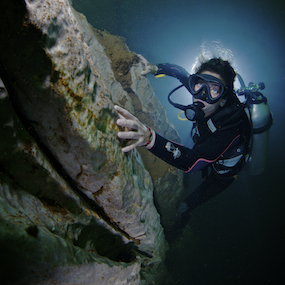

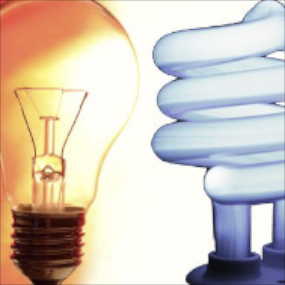
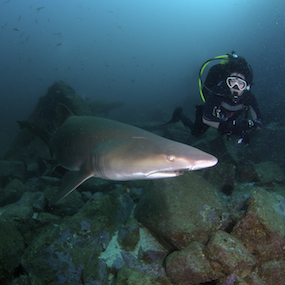
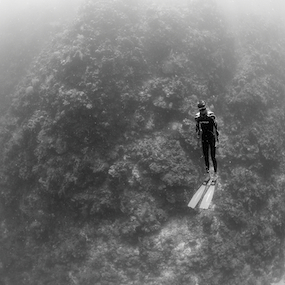
 Antarctica
Antarctica




